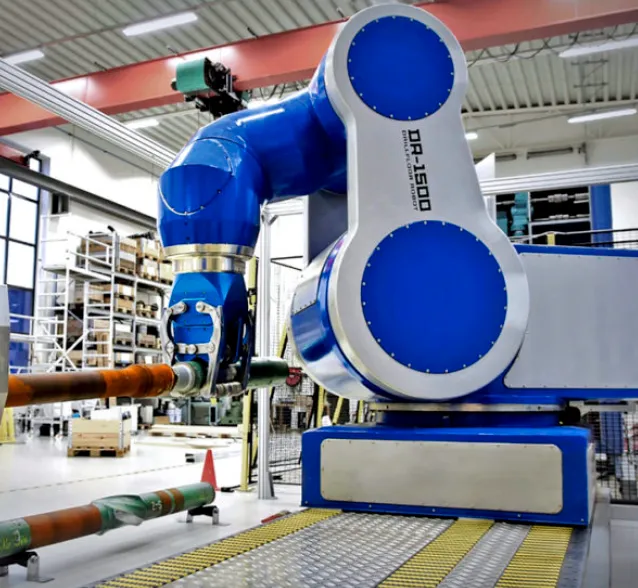The rise of robotic drilling has brought significant changes to industrial operations, offering solutions that not only enhance efficiency but also improve safety and precision. By automating drilling tasks, industries are experiencing faster cycle times, lower costs, and reduced risks associated with manual labor. This transformation is particularly evident across sectors like aerospace, automotive, and more, where accuracy and consistency are critical.
The Shift from Manual to Robotic Drilling
The move from manual to robotic drilling is more than just an upgrade in machinery—it’s a fundamental shift in how industries approach their production lines. With traditional drilling, workers face dangerous and repetitive tasks that can lead to fatigue, injuries, or even long-term health issues. Robotic systems, on the other hand, automate these processes, providing a safer alternative that also boosts productivity. The robots can operate around the clock, enhancing cycle times and reducing costs associated with manual labor and mistakes.
The Key Benefits of Robotic Drilling
Robotic drilling offers several significant advantages over its manual counterpart. First and foremost, safety is improved by removing human workers from the hazardous drilling environment. Additionally, robotic systems can operate continuously without the need for breaks, which results in increased efficiency. Automation also helps reduce material waste by ensuring that drilling is done precisely and consistently, cutting down on errors and scrap material. The result is a cost-effective method of drilling that is both reliable and faster than manual processes.
Customizing Robotic Drilling Tools
One of the major strengths of robotic drilling is the ability to customize end-of-arm tooling (EOAT) to meet specific needs, whether in aerospace, automotive manufacturing, or other industries. EOAT refers to the specialized tools attached to the robot’s arm, and customization ensures that the robot can perform highly specific tasks with precision. Whether it’s for drilling, fastening, or any other application, these customized tools help robots maintain the required rigidity and orientation, even when significant forces are applied.
Precision and Stability in Robotic Drilling
For robotic drilling to be effective, precision is key. Robots must be able to position tools accurately and maintain rigidity under pressure. In many industries, even the slightest deviation can lead to severe consequences, especially when working with complex components like airframes or engine parts. Robotic systems ensure that every drill hole is placed exactly where it is needed, and they can consistently replicate this accuracy, which is essential for high-stakes industries such as aerospace and automotive.
Robotic Drilling in the Aerospace Industry
The aerospace sector has been one of the leading adopters of robotic drilling, where the need for precision is particularly critical. Robots are used extensively for drilling airframe components, where thousands of holes must be drilled with impeccable accuracy. Vision systems integrated into the robots enable them to precisely locate drilling points on complex surfaces, ensuring that the entire airframe structure meets stringent standards. These systems are crucial in producing parts that not only fit perfectly but also contribute to the safety and functionality of the aircraft.
Leading Robotic Drilling Solutions
Several robotic manufacturers, including Fanuc, KUKA, and Motoman, have developed solutions that excel in drilling applications.
- Fanuc Robotics: The Fanuc M-900iB/700 is a super heavy payload robot perfect for high-precision drilling, especially in aerospace applications. Equipped with advanced software that compensates for deflection, this robot maintains high rigidity and precision, ensuring top-quality results even when transitioning from drilling to tasks like deburring. Another Fanuc model, the M-900iB/260L, features a 6-axis arm with a payload capacity of 260kg, a 3100mm reach, and a drilling head capable of rotating at 1800 RPM. This robot is designed for large-scale drilling tasks where both power and precision are necessary.
- KUKA Robotics: The KUKA KR150 robot is another versatile tool used in various industries, including aerospace and automotive. It is especially effective in drilling sand cores used for casting, providing accuracy in industries that require precision in shaping complex parts.
- Motoman Robotics: Motoman’s UP50 industrial robot is designed to handle smaller payloads, with a 50kg capacity. It’s widely used for drilling holes in tubes and other cylindrical parts. The UP50’s system can also automate the process of part transfer, ensuring seamless operation across multiple stations.
The Future of Robotic Drilling
As the demand for precision and efficiency grows, robotic drilling continues to evolve. Companies like Robotic Drilling Systems AS are pushing the boundaries of automation by developing fully autonomous drilling rigs. These advanced rigs are designed to operate without human intervention, performing tasks like positioning, erecting steel reinforcements, and drilling wells. The goal is to create self-sufficient systems that can carry out drilling operations with minimal oversight, further increasing productivity while reducing human exposure to potentially hazardous environments.
Conclusion
Robotic drilling has emerged as a game-changer for industries that require high precision and efficiency. From improving safety and reducing costs to enhancing production speeds and product quality, the benefits of robotic drilling are clear. As technology continues to advance, we can expect these systems to become even more autonomous and versatile, offering manufacturers an even greater edge in their operations. By embracing robotic drilling, industries can stay ahead of the competition and ensure their processes are both safe and efficient.







